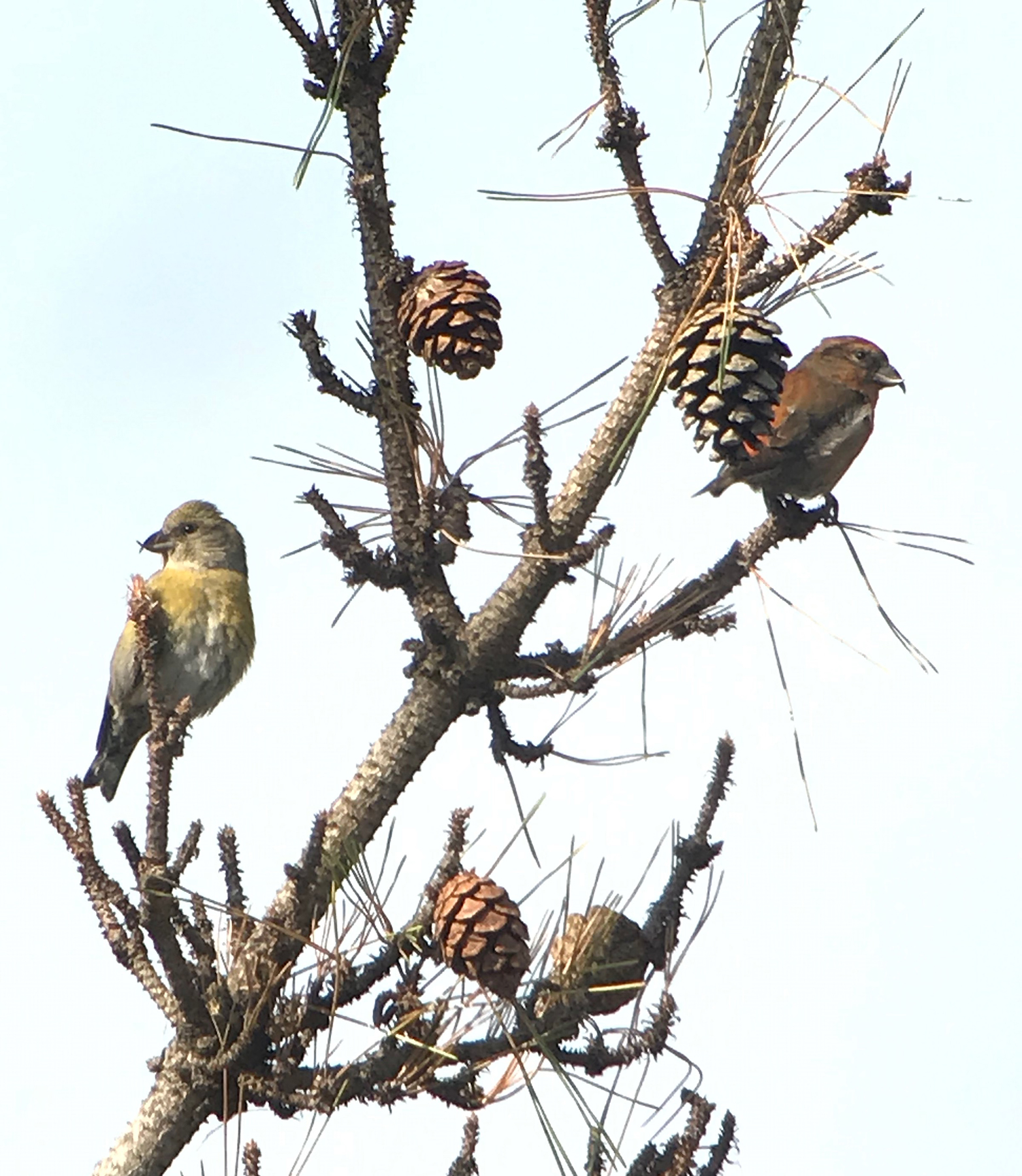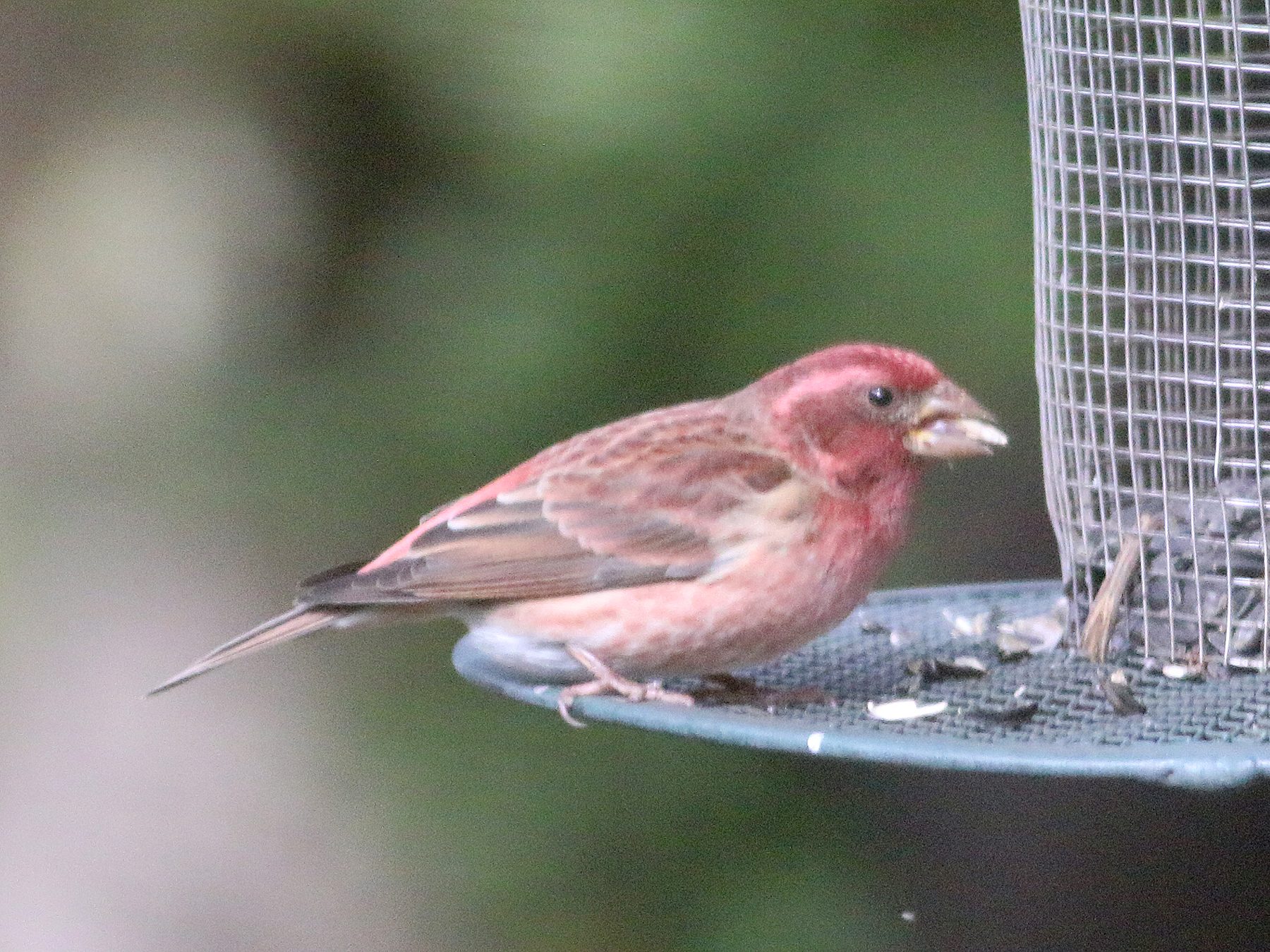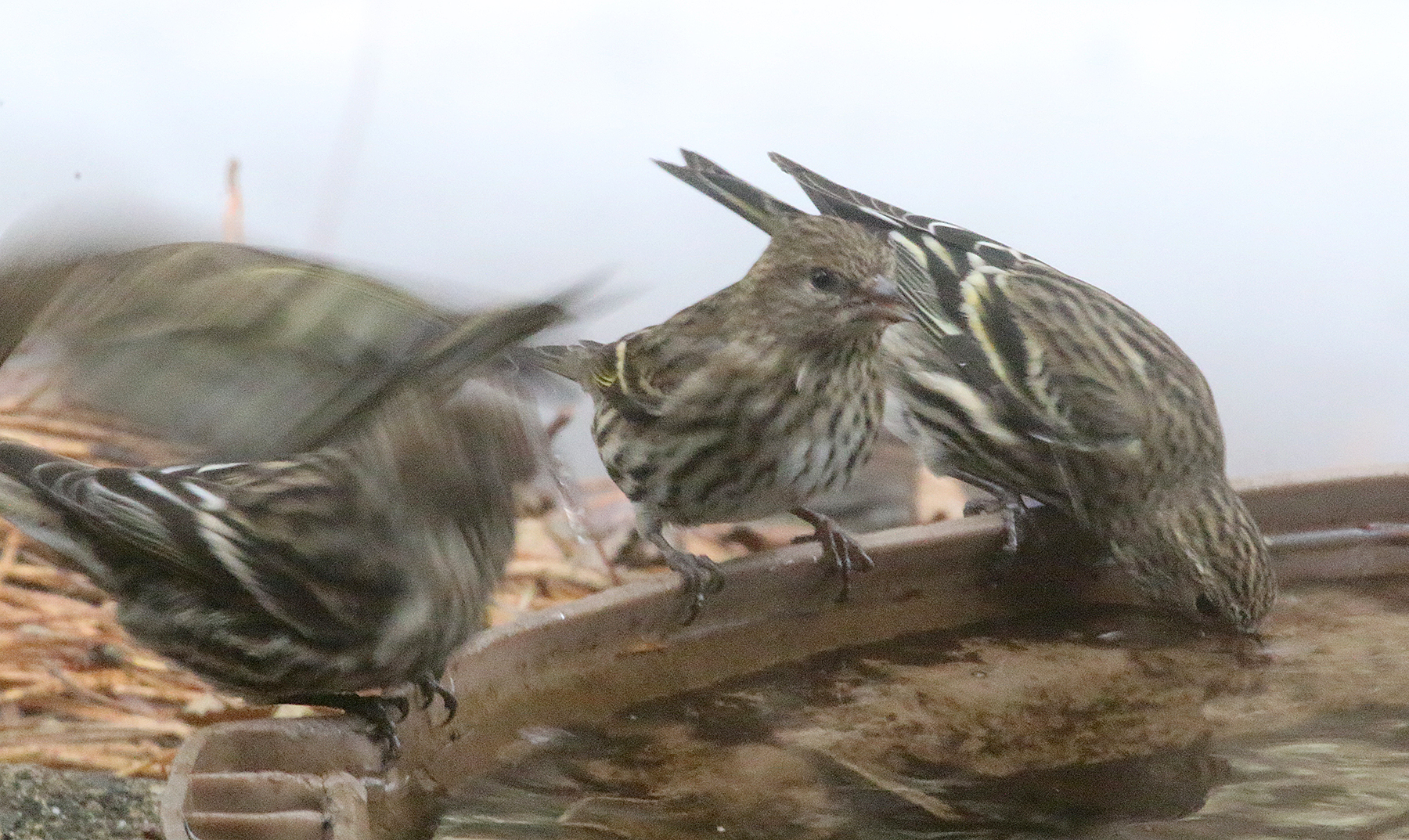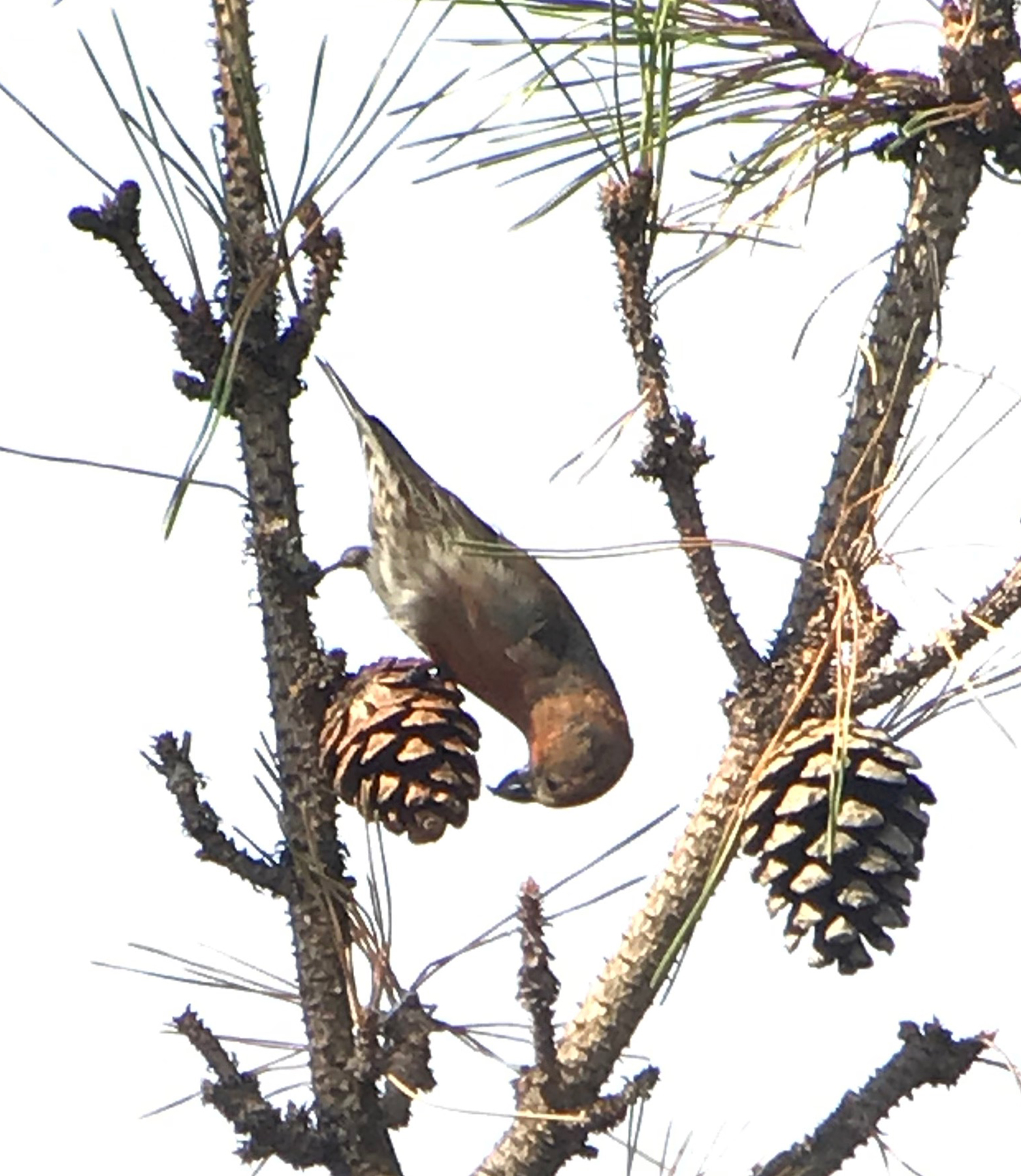This was predicted to be a banner year for winter finches here in New Jersey, and so far that is the case. For those who are adept at identifying them by their flight calls, reports are emerging throughout the state of Purple Finches, Pine Siskins, Red Crossbills, a few Common Redpolls, and even Evening Grosbeaks. Hearing them fly by is one thing, but it’s quite another to get good looks at them. I have seen a good number of Purple Finches this fall, which are probably the easiest and most regular of the winter finch group.
My first exposure to Pine Siskins this season was spotting two of them about two weeks ago at Cedar Bonnet Island. Last week I was able to see a nice group of around eight Pine Siskins at feeders in Cape May, and this past weekend we saw at least two of them at our monthly Cloverdale Park walk. Today I was treated to nine of them at my yard feeder. So it looks like it will be another banner siskin year. Two years ago we had Pine Siskins at Cloverdale into May, while last year we had none, nicely showing the irruptive nature of this species and its relatives.
Yesterday Jeanine and I were fortunate to be in Cape May when a report came in of a group of four Red Crossbills that were spotted feeding in the pine trees in Cape May Point. We made our way over, and using the ‘find the birders’ strategy, we were able to get great looks at four Red Crossbills methodically feeding on the pine cones. I am assuming that this is merely the tip of the iceberg, and we will be finding more and more of them this season. Heck, it’s only November and the finches are appearing in many places. Five years ago, before I moved back to NJ, we had an irruption year in NY, when both Red Crossbills and White-winged Crossbills were seen well into early spring. That year was the last time that I saw them until yesterday. Look at the photos to see how crossed their bills are, and the video gives an idea of their methodical feeding activity.

Male Red Crossbill on the right, and the yellowish female is on the left. Note the incredible crossing of their bill tips.
We have yet to spot any Evening Grosbeaks, which are the real prize this year, but it is only a matter of time. And will they be joined by White-winged Crossbills, Common Redpolls, and do we dare dream of Pine Grosbeaks? Stay tuned and keep your eyes and ears open.


